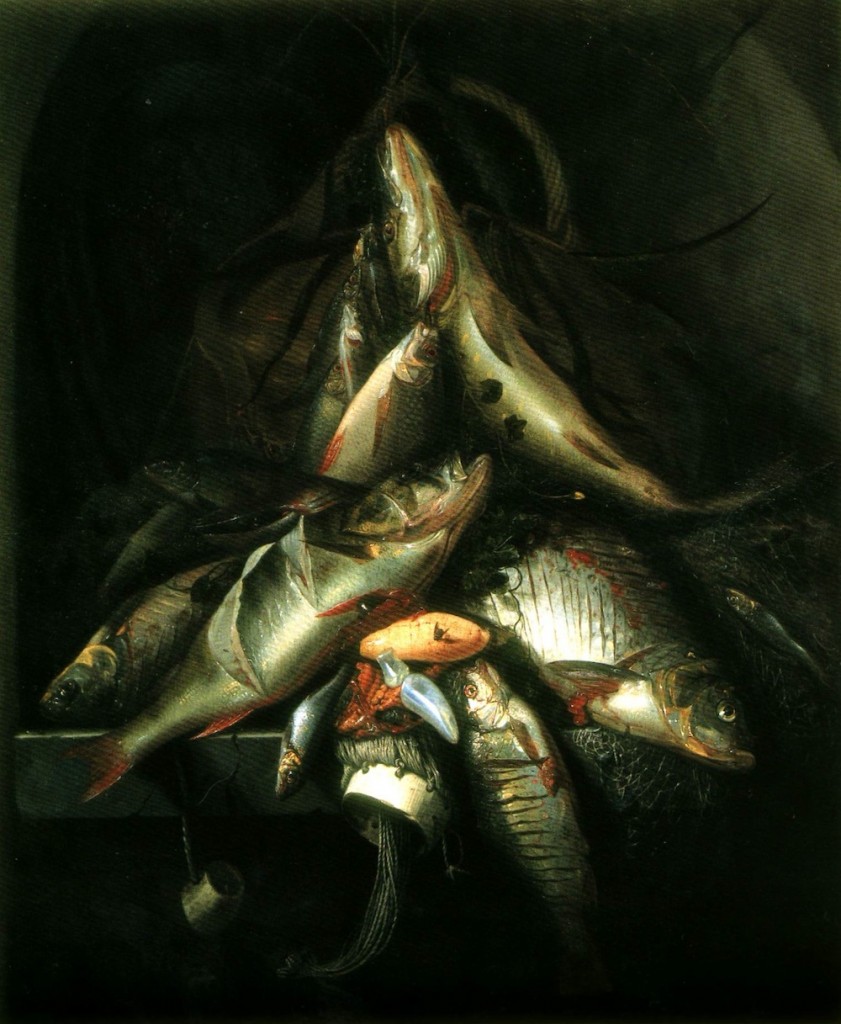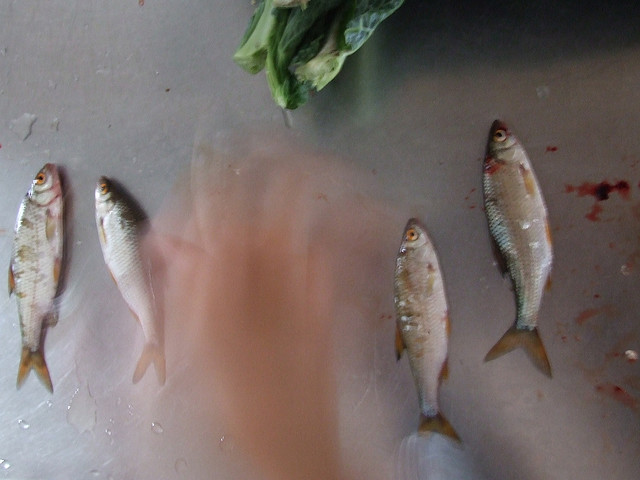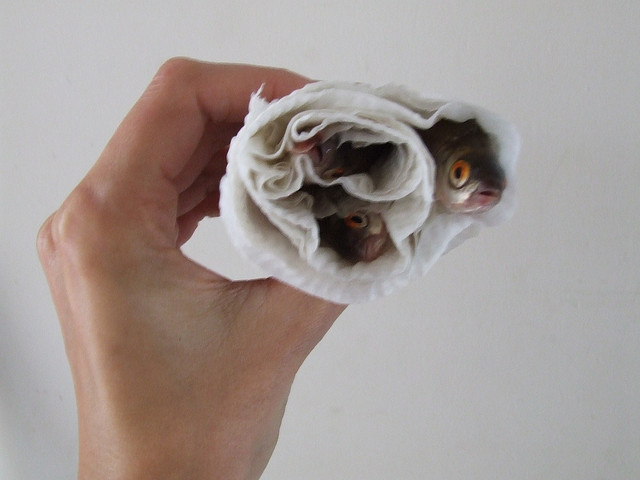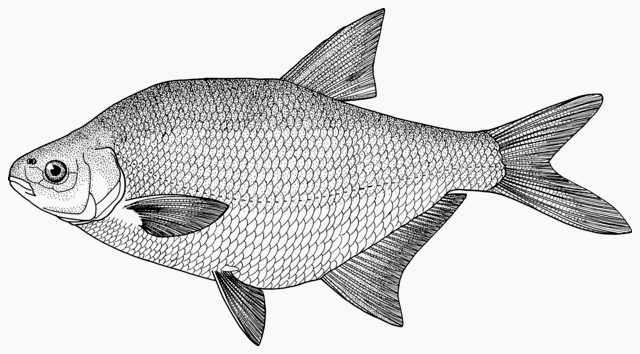Scales of surplus
Bream and roach are two fishes that swim in cockaignian abundance in the city’s canals, lakes and main Amstel river. They are the most common freshwater fish in Amsterdam though not many locals go to the trouble of eating them. This was rather different a few centuries ago when this fish was deemed perfectly acceptable for human consumption, especially during lent by the fasting multitudes.
The appreciation for supposedly undesirable river fish can be seen in the fish still lives of the Dutch Golden age. A painter by the name of Jacob Gillig (1636-1701) was one of the foremost freshwater fish still life painters in the Netherlands. His name attests to his craft: Mr Gillig was a painter with gills.
Riviervissen en netten in een nis (1669) [Freshwater fish and fishing nets in a niche] is an extraordinary bouquet of fish piled not horizontally on a table, but in a vertical pyramid, reminiscent of floral still lives. The fish centre-left of the picture is a freshwater bream and directly above and below this fine scaled specimen are three small roaches. In the middle is a pile of guts, roe (with a fly) and an eerily blue air bladder which spills from the belly of the bream.
Today theses indigent fish aswim in the Ijsselmeer and innercity waterways are as unwanted as holey socks. Only in crisis years, such as the greulling hunger winter of World War II (1944-45) did the bream and roach enjoy a momentary culinary revival as starving souls were forced to recognise the previously untapped surplus of edibles in their home city.
Common Roach Rutilus rutilus
The roach is prettier than it’s ruddy name. A silvery fish with red fins that likes to hang out in big groups near overgrown lake and riverside banks. It’s an omnivor, eating vegetable matter, but also invertebrates and detritus.
Bream Abramis brama
Bream is known in Dutch as ‘Slijmjurk’ which translates ‘Slime dress’ because of its thick slime coating. It’s thanks to its stoic slime that Mr. Abramis brama can survive in murky, eutrophicated water. Though it is said that the better tasting bream is found in well oxygenated water, not surprisingly. Bream has a proboscic mouth enabling it to sift mud for food. The general problem with the copious populations of bream in Amsterdam is that they eat large amounts of animal plankton which means an excess of vegetable plankton and causes green soups of algae bloom which, in turn, sees a decrease fish species such as zander and perch. This is why Amsterdam city ecologist Martin Melchers calls on Amsterdam citizens to eat bream to help counteract the upshots of the over population of bream verbraseming — ‘breamification’. His recipe in his book Haring in het Ij draws on the wartime recipes of marinating fillets of bream for a few hours in vinegar with onion which dissolves the small bones. You can eat either it marinated or proceed to poach the marinated fillets. Ditto for roach. I have tried my own hand at preparing the fish for the Stedelijk in West project in 2009 and found that smoking over willow wood is the most delicious.
This ‘rubbish’ fish was recently turned into a lucrative scheme when an entrepreneurial fish wholesaler, Eeuwke Damstra, struck silver for the Russian snack food market — dried roach and bream is devoured by Russians as an accompaniment to beer or vodka. Damstra has since set up a processing plant and now all the fish that was previously thrown back overboard in de Ijsselmeer gets dried, dessicated and exported by the tonne to Russia and also to Russia-Jews in Israel.
Melchers and Douwstra offer two opposite solutions to bream and roach-ification. Melchers encourages a local citizenary enjoyment of this urban excess protein that dispels the bourgeois safety from the spontaneity of nature. For Melchers the very process of catching and preparing your own local bream and roach develops another possible relation to and conception of (underwater) life in the city. While Damstra’s economically-driven solution denies this amateur experimentation. Although the threat of a world war is no longer here, the omnipotent logic of global-capitalism is — to which the export of Vishandel Damstra subscribes. The fact that one business can trawl the surplus of fish and ship it elsewhere is a fishy logic, really.



